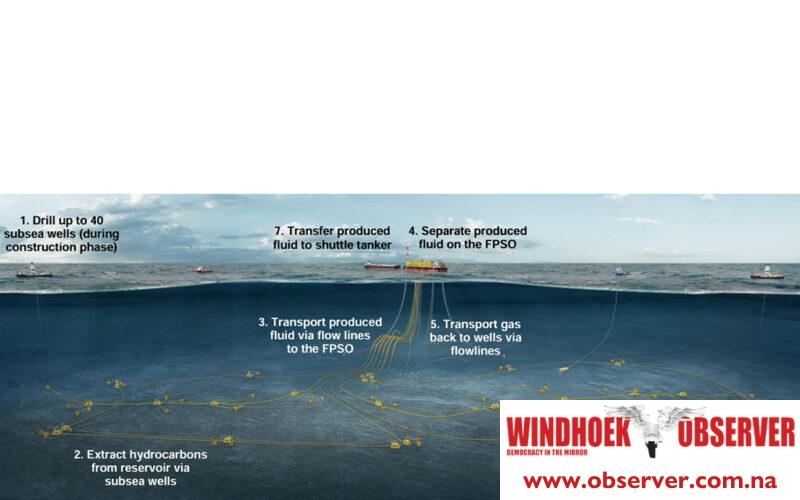Chamwe Kaira
TotalEnergies EP Namibia B.V. and its joint venture partners Namcor and Qatar Energy plan to drill up to 40 development wells on Block 2913B off Namibia’s southern coast. The wells will include oil producer (OP) wells and gas injection (GI) wells.
This information is from the final scoping report of the Environmental and Social Impact Assessment for the Venus Development, prepared for TotalEnergies by SLR Environmental Consulting (Namibia).
Block 2913B covers 8,215 km² and lies offshore southern Namibia, about 300 km from Oranjemund, 320 km from Lüderitz, and 700 km from Walvis Bay. Water depths range from 2,600 to 3,300 metres.
TotalEnergies discovered hydrocarbons in Block 2913B in 2022 and they named the discovery Venus. The company and its partners have appraised the find and are studying the feasibility of developing the offshore Venus Field to produce crude light oil for commercial sale.
The estimated production capacity is 160,000 barrels of oil per day, with storage capacity around two million barrels. During production, a Floating Production Storage and Offloading (FPSO) vessel will be anchored at the Venus Field. Dynamically Positioning Shuttle Tankers (DPST) will offload oil from the FPSO. The DPST will sail to a nearshore area to transfer oil to a conventional tanker, which will transport it to buyers.
“The JV are undertaking ongoing studies to finalise the precise location for the nearshore transhipment area. It will likely be located in coastal waters near Walvis Bay, 5–10 kilometres from the coast. Locations closer to Lüderitz have also been assessed,” the report said.
The Venus Project facilities are designed to operate for at least 20 years and will be decommissioned at the end of the field’s life.
President Netumbo Nandi-Ndaitwah said the discovery provides Namibia with an opportunity to set up an oil refinery.
Namibia consumes 26,000 barrels of oil per day, or 9.5 million barrels annually. This is nearly four times the 6,900 barrels per day consumed in 1991. Oil and petroleum products serve many sectors.
The transport sector consumes the most petroleum products, using petrol and diesel to move people and goods across Namibia’s distances. Jet fuel is critical for aviation at Hosea Kutako International Airport and regional airports. Fuel oil is used for marine transport, especially in Walvis Bay’s shipping and fishing industries.
In 2023, petroleum imports through Walvis Bay rose to 1,192,286 tonnes, up from 796,277 tonnes in 2022. Namibia imports oil mainly from South Africa, the Middle East, Asia, and Europe. Without refining capacity, the country depends on imports of refined petroleum products.




